DIMPLE CREATION
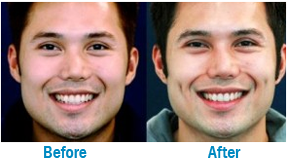
CAN YOU SURGICALLY GET DIMPLES?
Dimple surgery or dimpleplasty is a reality like rhinoplasty you know the nose job. You must have heard how most of your favorite stars had those. Can you surgically get dimples? Yes, you can.
So can you surgically get dimples? Yes, it is simple where the cosmetic surgeon shortens your cheek muscle by making an incision from the inside of your cheek. Therefore, no scar is visible on your outer cheek. The shortening of muscle is what causes natural dimples in the first place.
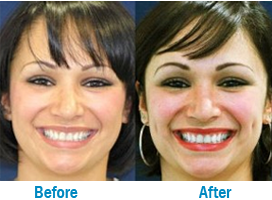
DIMPLE CREATION SURGERY PROCESS
When you want a plastic surgery to get dimples, you have to book an appointment with a cosmetic surgeon in his office by phone or email. You will be required to indicate when you want to go for dimple creation surgery. This is to allow the surgeon to plan. Furthermore, you may be required to make a deposit so that it not just a word of mouth business.
On the d-day for plastic surgery to get dimples, the initial stage will entail marking where you want the beauties to appear. This is made possible with computer imaging. You can tell the surgeon where you want the dimples, but not the size or depth of the beauty marks. The surgeon assesses your skin tissue, muscle and fat to determine the depth and size of your dimples. Therefore, it is entire on how much or how less you have in terms of skin and muscle.
After marking on the outside, an incision inside your cheek is made. The incision scars the muscle and inner skin of your cheek. The surgeon further passes an absorbable suture in the cut, which pulls on your inner cheek where there is already a mark on the outside. Consequently, after about 20- 30 minutes you have your dimples. The incision takes place when you are under local anesthesia so the whole process is painless.
After dimple creation surgery, the dimples are usually visible even in the absence of a smile or facial movements. However, on healing of the scar, the dimples will be visible like natural dimpleswhenever you smile or make other facial movements. Furthermore, the scar will be on the inside and not on your cheek. The healing process may take days or weeks.
CHEEK DIMPLE SURGERY SIDE EFFECTS
Although there are no major side effects after dimple surgery, you may experience some of these minor signs, which disappear after sometime. However, should they persist, seek help from your cosmetic surgeon. Some of these are common and others are rare after cheek dimple surgery:
- Swelling
- Bruising
BACK DIMPLE SURGERY
Unfortunately, cosmetic surgeons have not yet discovered how to create dimples on the lower back surgically. I am using the word ‘yet’ because we do not know about tomorrow. However, you can get back dimples with workout. Similarly, you can try checking your body fat to ensure you are on the right level of low body fat. These exercise and diet is the only way to dimples of venus and not back dimple surgery.
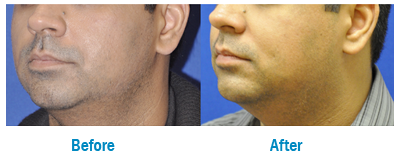
DIMPLE SURGERY GONE WRONG
Nose jobs go wrong, read the late Micheal Jackson, who came from a Nubian nose to an upturned nose and sometimes had to cover his nose in public. The same case applies to dimple surgery. You will notice dimple surgery gone wrong with the following pointers:
- One dimple is larger than the other
- The dimples do not appear on the same spot of the cheeks
- Uneven size and depth of dimples on both cheeks
- Dimples become shallow while they were initially deep or they disappear completely
In case of a dimple surgery gone wrong,you can always opt for a reverse dimple surgery.
NOSE SURGERY (RHINOPLASTY)
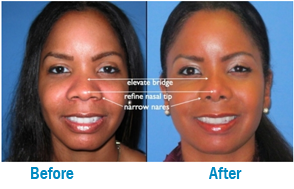
Because of the prominence of the nose on the face,it has tremendous emotional significance to each person and deviations from a normal range can make a person feel self-conscious. For this reason, rhinoplasty is one of the most common cosmetic procedures done.
The procedure itself involves several tissue types (bone, cartilage, and skin) as well as a complex structure and involves the important function of breathing. For these reasons,rhinoplasty is best approached conservatively and by a surgeon with experience.
The surgery itself is most commonly done with general anesthetic for patient safety and airway protection. Some minor procedures can safely be done with local anesthesia or local.
The best way to determine what your best options are to address your areas of concern is to come in for a consultation with one of our surgeons. At that visit we will review your areas of concern to do an exam & discuss treatment options to best help you achieve your goals.
Rhinoplasty can be done "closed" (with only incisions inside the nose), or "open" with the same incisions as closed, along with a small incision in the skin between the nostrils. The incision choice depends a great deal on the complexity of the procedure planned. The rhinoplasty can address the nasal tip, the hump of the nose, a crooked appearance, breathing problems, or even all of these. If the nasal bones are narrowed it will be necessary to wear a nasal splint for about a week. Swelling after rhinoplasty will last to some extent for up to a month. Most swelling will start to subside after a couple weeks, however your return to work will depend on the nature of your job. Return to full sports activity may be 6 to 8 weeks.
Because of the complexity of this procedure and healing variability it is not uncommon to need minor revision work. This can commonly be done with a local anesthetic but should not be done before swelling is no longer present.
FACELIFT SURGERY
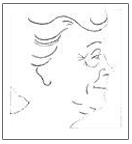
THE EFFECTS OF AGING
We all must age; we just donít have to be happy about it!
As we age the soft tissues of our face will slowly drop, creating jowls, lines, creases and a sagging neck. The facelift is designed to correct these structural changes. Other signs of aging such as loss of skin elasticity and fat from the face can also be addressed but are not corrected by a facelift alone. Also while a facelift does not correct the eyes or brow it can be combined with those procedures for total facial rejuvenation.
WHEN SHOULD A FACELIFT BE CONSIDERED?
All of us age at different times and rates so a facelift should be considered when facial aging has occurred. This can be anytime. We have seen substantial aging as young as the late 30's and have successfully operated on those in their late 70ís. A facelift will give you a "fresh" look it should not make you look different. We have heard many say "I would never get a facelift because they look so fake." We say you just never notice the ones done well. The most common responsese are; "Did you get a new hairstyle?" or "Have you lost weight". Or more commonly, "You just look so good"
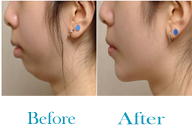
WHAT TYPE OF FACELIFT ?
We believe you should use the right tool for the right job. There are many different "types" of facelifts. Some very good and useful, some not so much! The best way to keep them straight is to think of them in categories. First is the standard facelift. This involves an incision in front of and behind the ear. There are different techniques used but the important thing is for the surgeon to perform the procedure with which he/she has had the most success.
Second are the short-scar or so called "mini" facelifts. These involve an incision primarily in front of the ear only. They are useful if there is not as much aging involved and a large neck correction is not needed. Finally there are the lifts done with barbed sutures. It is our opinion that these do not last long enough to justify the cost/risk. Our surgeons at Sculptura Aesthetic Surgery Centre keep upto date with the latest techniques and trends.
FORE HEAD LIFT
FOREHEAD LIFT SURGERY
A forehead lift (or "browlift") is a procedure that improves the heavy and drooping appearance that can occur in the brows, forehead and upper eyelids. The passage of time affects the facial appearance and some sagging, droop or heaviness typically occurs in the brow region and upper eyelids. Some people have a relatively low brow position naturally, even at a young age. This may result in a tired, angry or sad appearance that does not reflect your inner self. In these cases, a forehead lift can produce a very positive change. This procedure involves lifting the forehead and brow to a more optimal position, which also tends to "open-up" the area around the eyes to reveal a more youthful and attractive appearance. Sometimes people will consult for upper eyelid blepharoplasty(upper lid lift) and actually will benefit more from a forehead lift. Other times, a blepharoplasty or even a full face lift is considered along with a forehead lift. A consultation with a board certified plastic surgeon can help you determine what is needed to achieve your goals.
THE FOREHEAD LIFT PROCEDURE
The original forehead lift technique is called the "open browlift". It involves making an incision across the top of the scalp, behind the hairline, from the top of one ear across to the other. If the hairline has receded, the incision can be placed along the actual hairline, which can, in effect, lower the hairline. The endoscopic brow lift has become the most commonly used technique. Rather than making a long scalp incision, the surgeon makes 3 to 5 much smaller incisions behind the hairline. A camera device and the endoscope is used to visualize the operative site. The forehead and brow regions are then freed-up as would be done with the open technique. The brow can then be lifted to an optimal position. It is secured in position typically with small, dissolvable devices called endotines, which are anchored to the bone and hold the forehead in place during the healing period. They gradually dissolve over 8-9 months, but the brow position is maintained, usually for many years. These surgeries are typically performed under a light, general anesthesia, or occasionally under local anesthesia with IV sedation.
NECK LIFT SURGURY

The first type is a standard neck lift, otherwise known as the open neck lift. These usually are done in conjunction with a facelift and can achieve excellent results. The basic goal of neck surgery is to improve the appearance of the neck by re-creating an angle between the jaw line and the front of the neck. This angle is called the cervicomental angle and helps to make the neck look more youthful.
As a part of aging, excess lax neck skin can hang down and create a straight line from the bottom of the chin to the lower neck. The underlying neck muscles can also contribute to the problem. The open neck lift involves an incision that runs behind the ear, then extends back into the posterior scalp hairline. Often, a submental incision (incision under the chin) is made in conjunction to allow the removal of fat and/or deal with the anterior neck muscles if necessary. With the open neck lift, we typically lift and tighten the platysma muscle in the neck, in addition to lifting the posterior neck skin and removing the excess.
s People that have substantial skin excess and laxity in the neck will usually require this type of lift. The second type of neck lift uses the ImplicitGuide® Surgical Suture System (iGuide®). This system delivers results which meet those of traditional, invasive necklift surgeries, while reducing side effects such as swelling and bruising and decreasing recovery times. This procedure is often done in conjunction with liposuction of the neck.
EAR SURGERY (Otoplasty)
Otoplasty or ear re-shaping can take many forms from correcting an overly prominent ear cartilage to reducing large ear lobes to closing elongated pierced ear openings or even complete ear lobe splits.
The most common age for correction of a prominent ear is before school starts, perhaps at age 6. This will reduce the emotional stress when starting school if the patient has been the object of ridicule. However, ears can be re-shaped at any age past 4 years; the age of full ear growth. Most often, the surgery is done under a general anesthetic, although IV sedation and local can work well for minor corrections. The cartilage is most commonly re-shaped with suturing done through a posterior approach hiding the incision on the back of the ear. Occasionally it is necessary to remove or even add cartilage for the best result possible. The procedure will take anywhere from one to two hours and is typically done as an out patient. Bandages are worn for a day or two and swelling and bruising may last 7 to 10 days typically. Sutures are removed in about one week.
Ear lobe surgery is done under a local anesthetic for all except complex procedures. Sutures are typically removed in 7 days and showering is permitted on the day after the procedure.
Repair of larger stretched areas such as from gauging, may require more than one procedure due to the complicated nature of the problem.
CLEFT LIP AND PALATE SURGERY
.png)
WHAT IS IT?
In the early weeks of development, long before a child is born, the right and left sides of the lip and the roof of the mouth normally grow together. In about one of every 800 babies, those sections don't quite meet. A child born with a separation in the upper lip is said to have a "cleft lip." A similar birth defect in the roof of the mouth, or palate, is called a "cleft palate." Since the lip and the palate develop separately, it is possible for a child to have a cleft lip, a cleft palate, or variations of both.
If your child was born with either or both of these conditions, your doctor will probably recommend surgery to repair it. Medical professionals have made great advances in treating children with clefts and can do a lot to help your child lead a normal, healthy, happy life.
.png)
A TEAM APPROACH
Children born with a cleft lip or palate may need the skills of several medical professionals to correct the problems. In addition to needing plastic surgery to repair the opening, these children may have problems with their feeding and their teeth, their hearing, their speech, and their psychological development.
In cleft lip surgery, the most common problem is asymmetry, when one side of the mouth and nose does not match the other side. The goal of cleft lip surgery is to close the separation in the first operation. Occasionally, a second operation may be needed.In cleft palate surgery, the goal is to close the opening in the roof of the mouth so the child can eat and learn to speak properly. Occasionally, poor healing in the palate or poor speech may require a second operation.
PLANNING FOR SURGERY
At your initial consultation, your doctor will discuss the details of the procedure he or she will use, including where the surgery will be performed, the type of anesthesia to be used, possible risks and complications, recovery, costs, and the results you can expect. Your surgeon will also answer any questions you may have about feeding your baby both before and after the surgery.
In most cases, health insurance policies will cover most or all of the cost of cleft lip or cleft palate surgery. Check your policy to make sure your child is covered and to check any limitations on types of treatment.
CLEFT LIP SURGERY
A cleft lip can range in severity from a slight notch in the red part of the upper lip to a complete separation of the lip extending into the nose. Clefts can occur on one or both sides of the upper lip. Surgery is generally done when the child is about 10 weeks old.
A cleft lip is a separation of the upper lip that can extend into the nose.To repair a cleft lip, the surgeon will first make an incision on each side of the cleft from the lip to the nostril.
To repair a cleft lip, the surgeon will make an incision on either side of the cleft from the mouth into the nostril. He or she will then turn the dark pink outer portion of the cleft down and pull the muscle and the skin of the lip together to close the separation. Muscle function and the normal "cupid's bow" shape of the mouth are restored. The nostril deformity often associated with cleft lip may also be improved at the time of lip repair or in a later surgery.
The cleft lip is then drawn together and stitched to create a normal "cupid's bow" shape to the upper lip.The scar left after surgery will gradually fade with time.
RECOVERING FROM CLEFT LIP SURGERY
Your child may be restless for a while after surgery, but your doctor can prescribe medication to relieve any discomfort. Elbow restraints may be necessary for a few weeks to prevent your baby from rubbing the stitched area.
If dressings have been used, they'll be removed within a day or two, and the stitches will either dissolve or be removed within five days. Your doctor will advise you on how to feed your child during the first few weeks after surgery.
It's normal for the surgical scar to appear to get bigger and redder for a few weeks after surgery. This will gradually fade, although the scar will never totally disappear. In many children, however, it's barely noticeable because of the shadows formed by the nose and upper lip.
CLEFT PALATE SURGERY
.png)
In some children, a cleft palate may involve only a tiny portion at the back of the roof of the mouth. For others, it can mean a complete separation that extends from front to back. Just as in cleft lip, cleft palate may appear on one or both sides of the upper mouth. However, repairing a cleft palate involves more extensive surgery and is usually done when the child is nine to 18 months old, so the baby is bigger and better able to tolerate surgery.
When the roof of the mouth doesn't grow together properly, the condition is called a cleft palate. To repair it, the surgeon will make an incision along both sides of the cleft.
To repair a cleft palate, surgeon will make an incision on both sides of the separation, moving tissue from each side of the cleft to the center or midline of the roof of the mouth. This rebuilds the palate, joining muscle together and providing enough length in the palate so the child can eat and learn to speak properly.Tissue is drawn together from both sides of the cleft to rebuild the roof of the mouth.
RECOVERING FROM CLEFT PALATE SURGERY
For a day or two, your child will probably feel some soreness and pain, which is easily controlled by medication. During this period, you child will not eat or drink as much as usual--so an intravenous line will be used to maintain fluid levels. Elbow restraints may be used to prevent your baby from rubbing the repaired area. Your doctor will advise you on how to feed your child during the first few weeks after surgery. It's crucial that you follow your doctor's advice on feeding to allow the palate to heal properly.
THE REPAIRED LIP OR PALATE
Children with a cleft palate are particularly prone to ear infections because the cleft can interfere with the function of the middle ear. To permit proper drainage and air circulation, the ear-nose-and-throat surgeon on the cleft palate team may recommend that a small plastic ventilation tube be inserted in the eardrum. This relatively minor operation may be done later or at the time of the cleft repair. In addition, surgery may be recommended by your plastic surgeon when your child is older to refine the shape and function of the lip, nose, gums, and palate.
You'll want to discuss further needs with the members of your cleft team.
It's important to keep in mind that surgery to repair a cleft lip or palate is only the beginning of the process. Family support is critical. Love and understanding will help your child grow up with a sense of self-esteem that extends beyond the physical defect.


